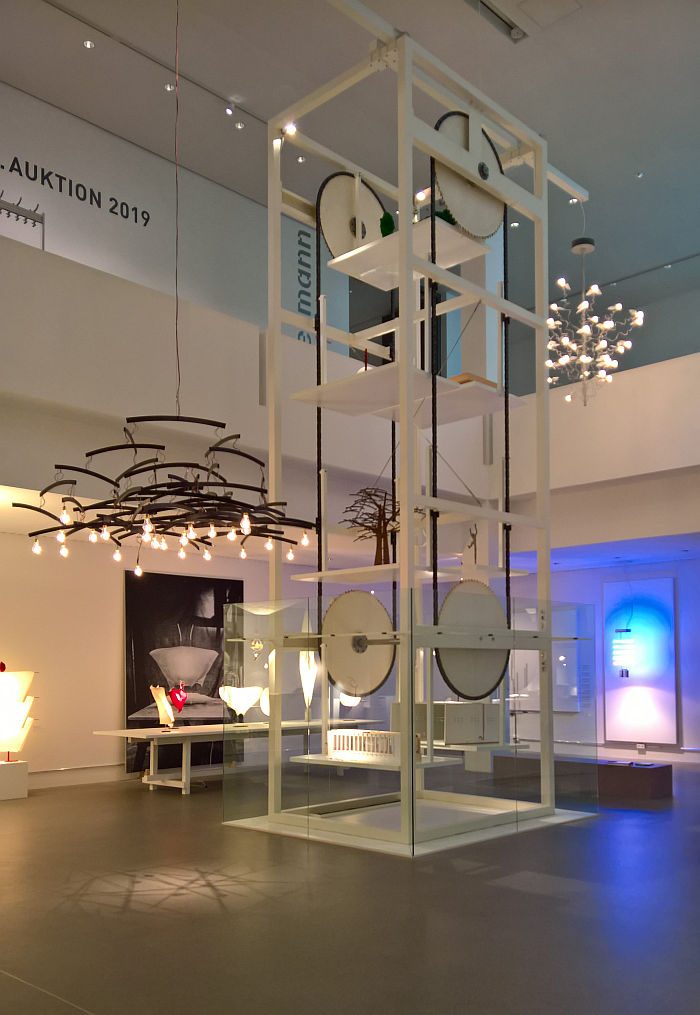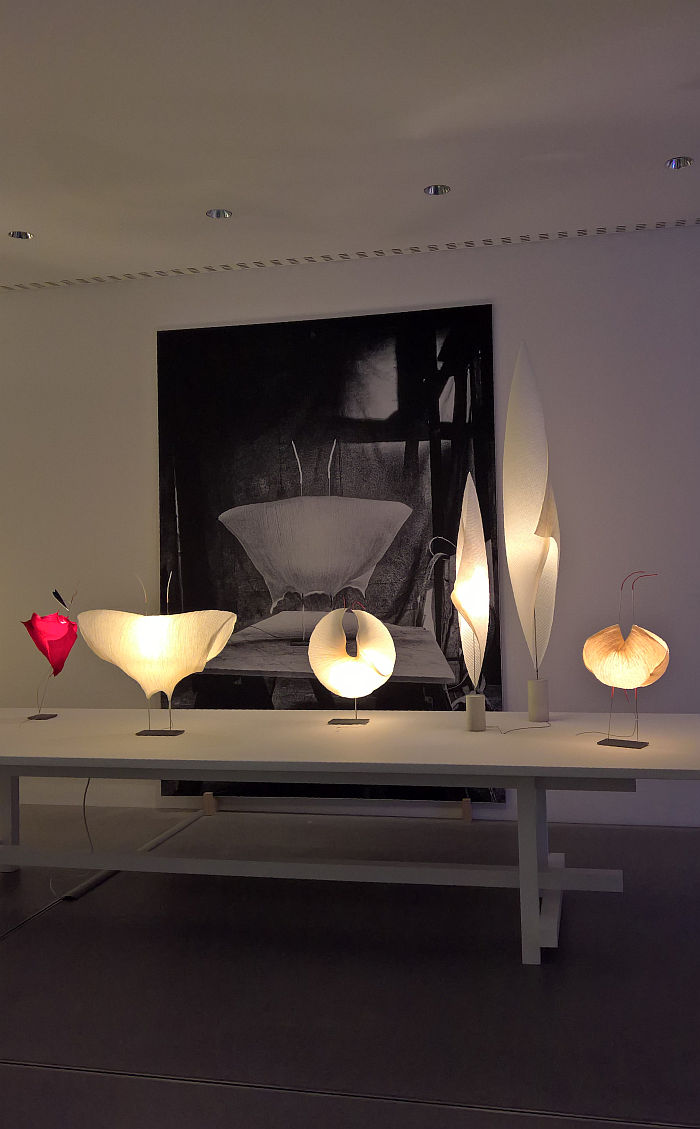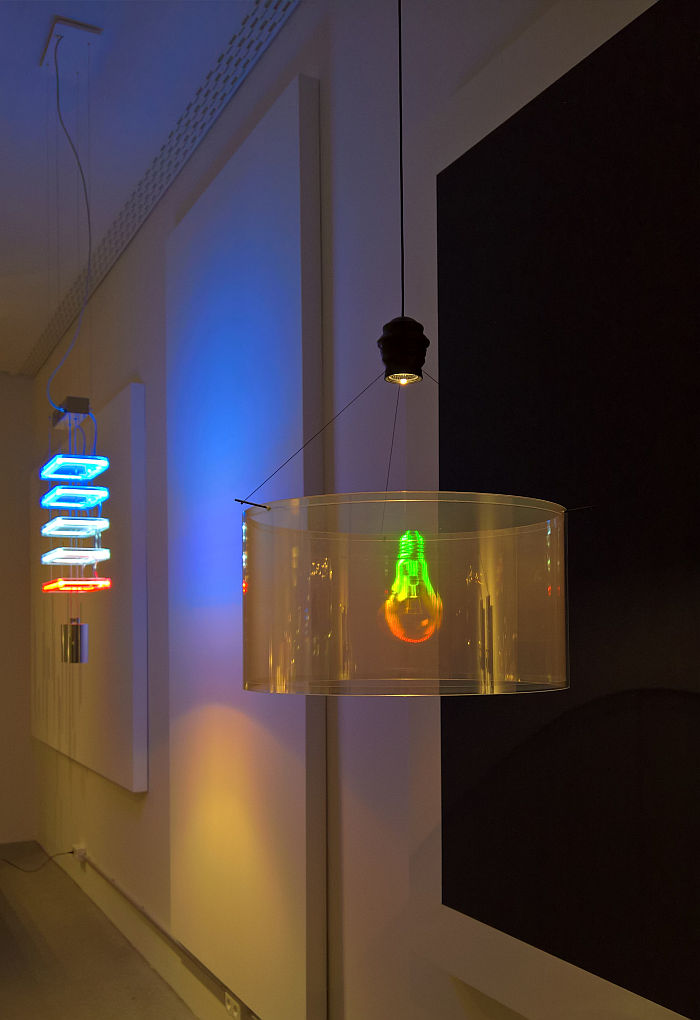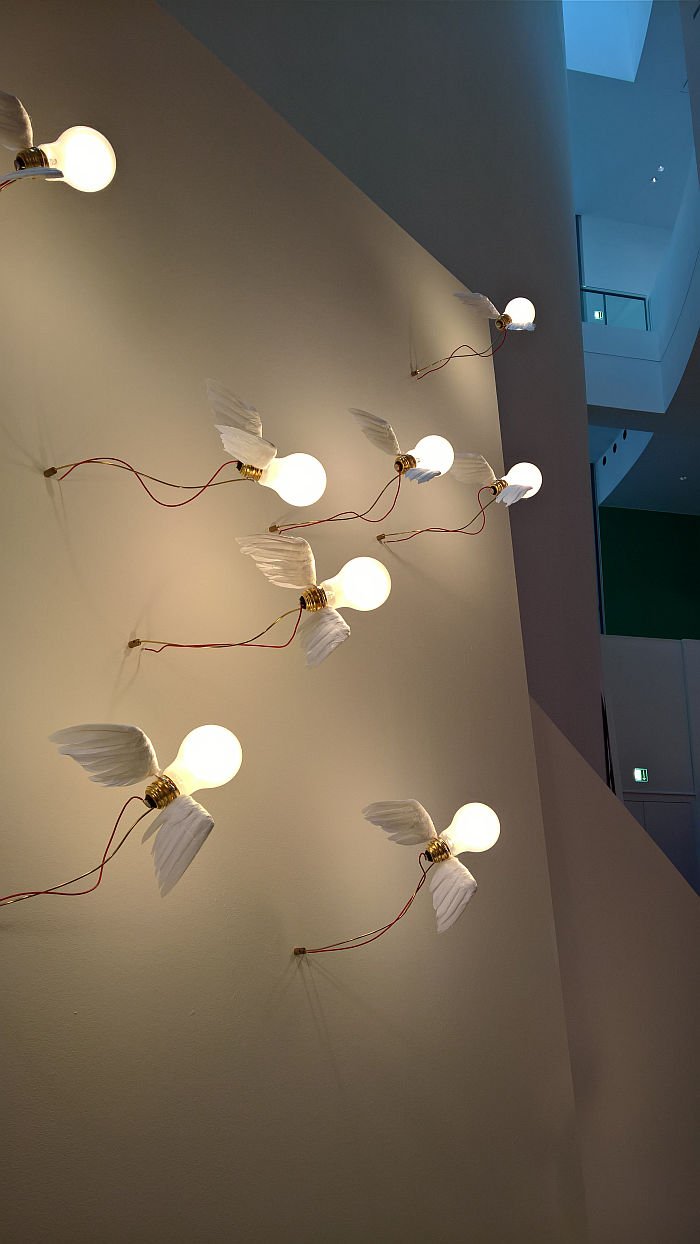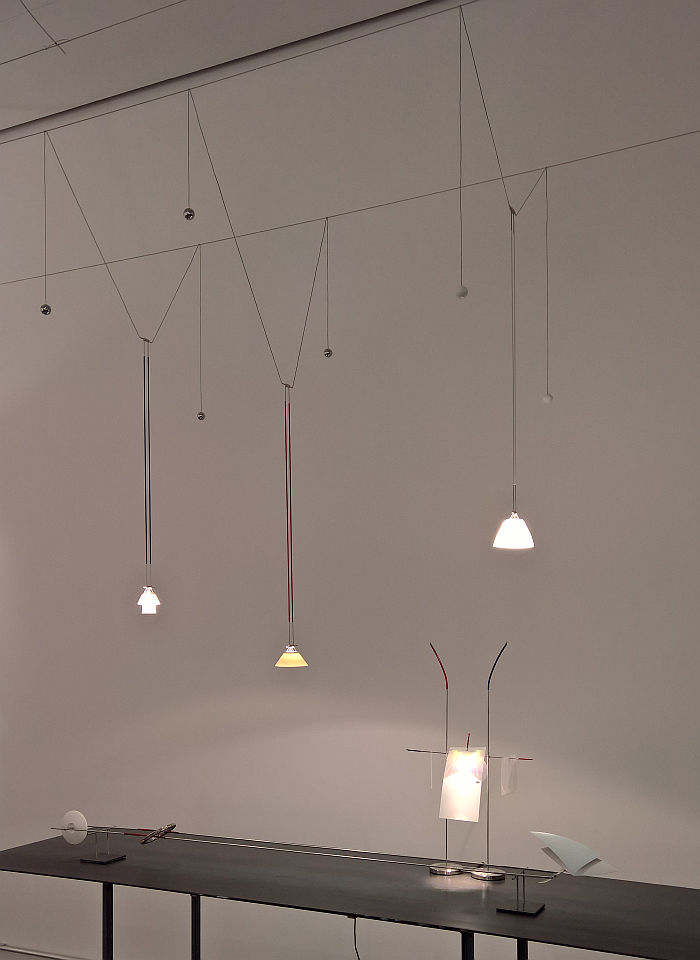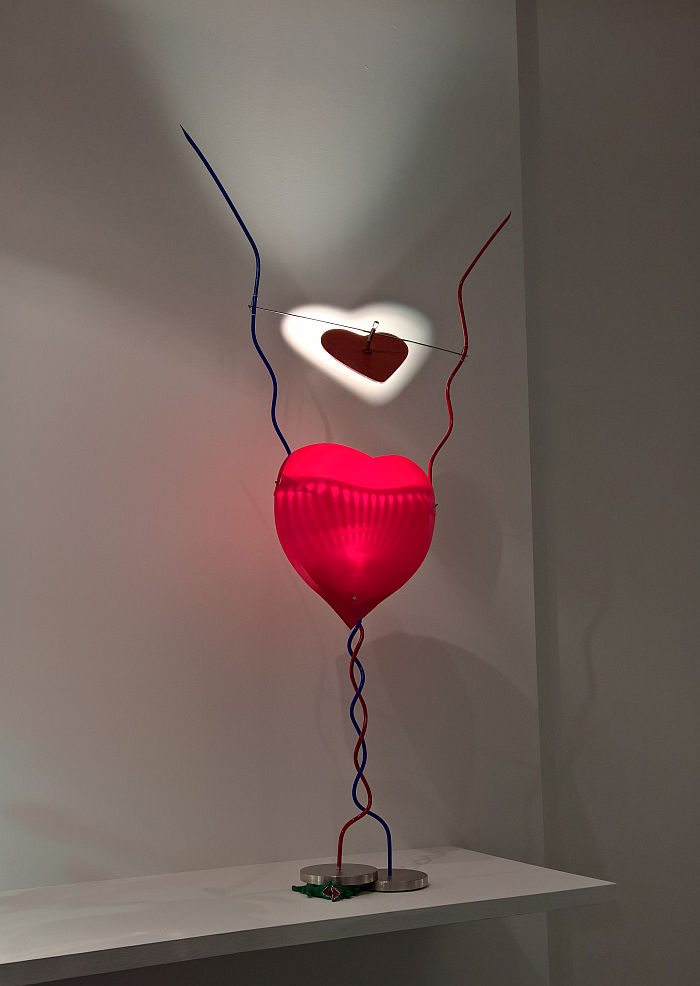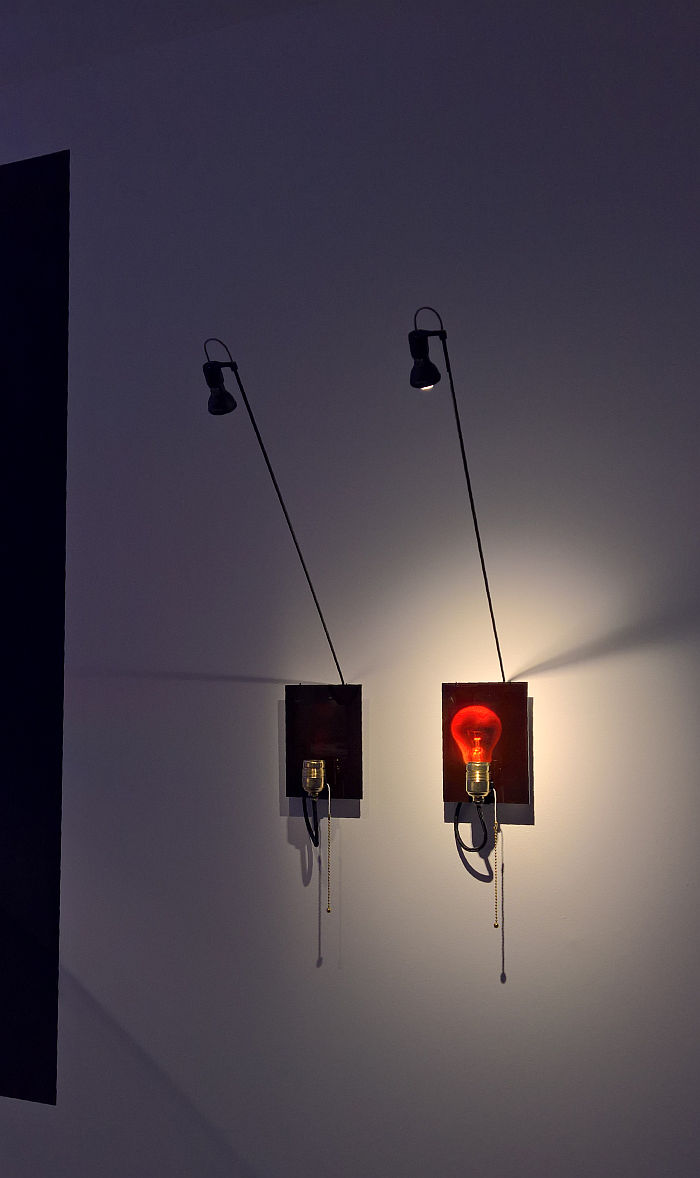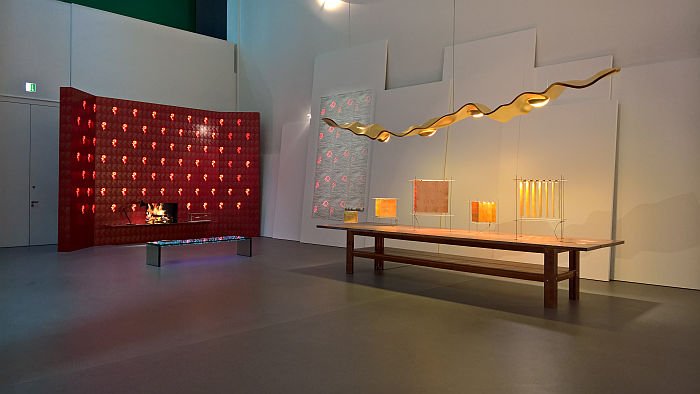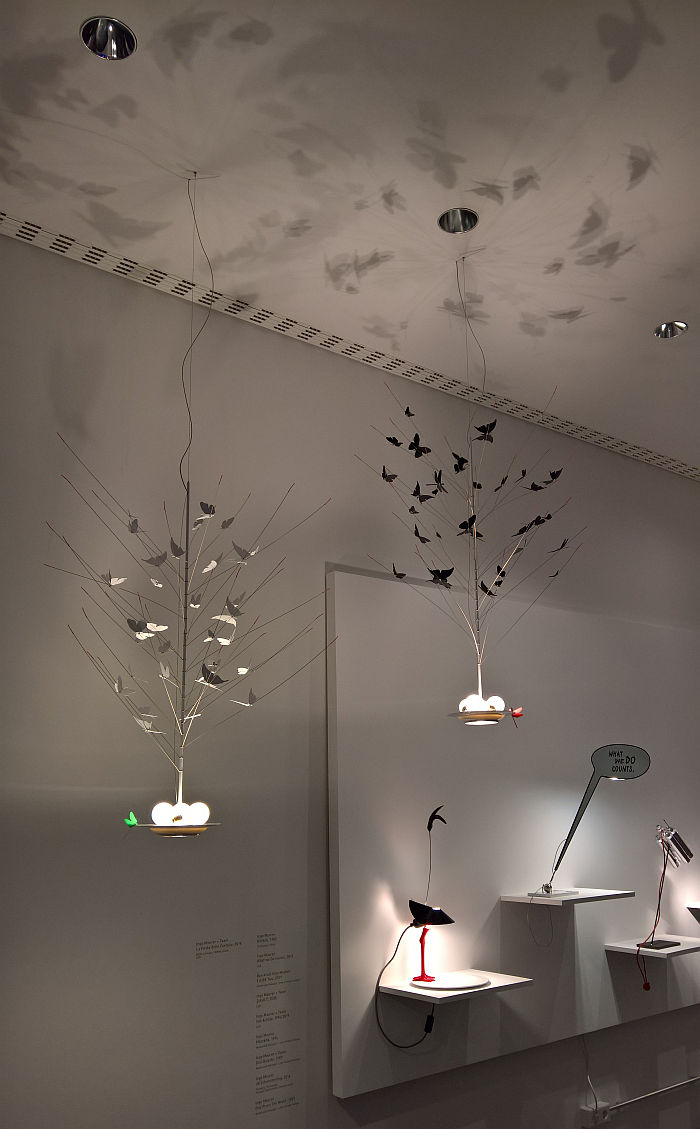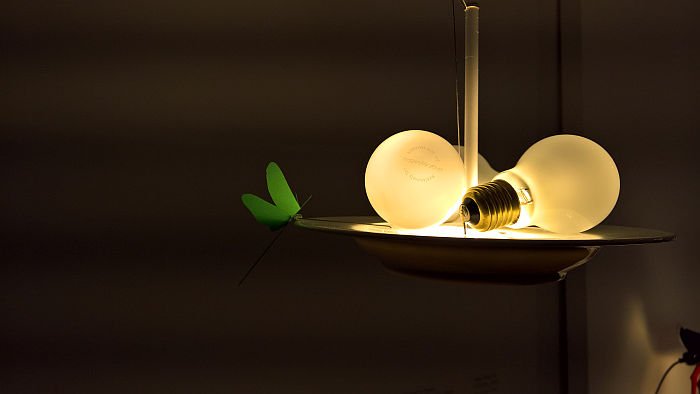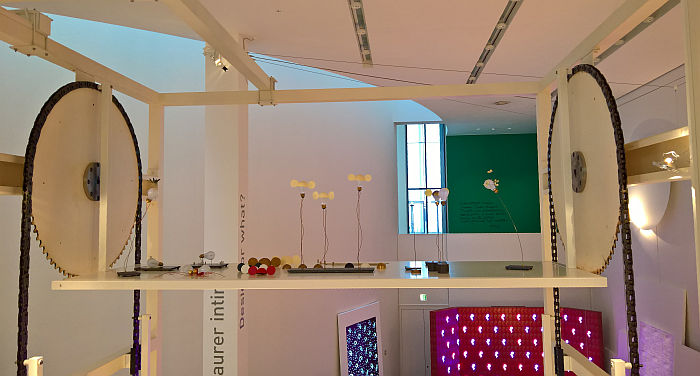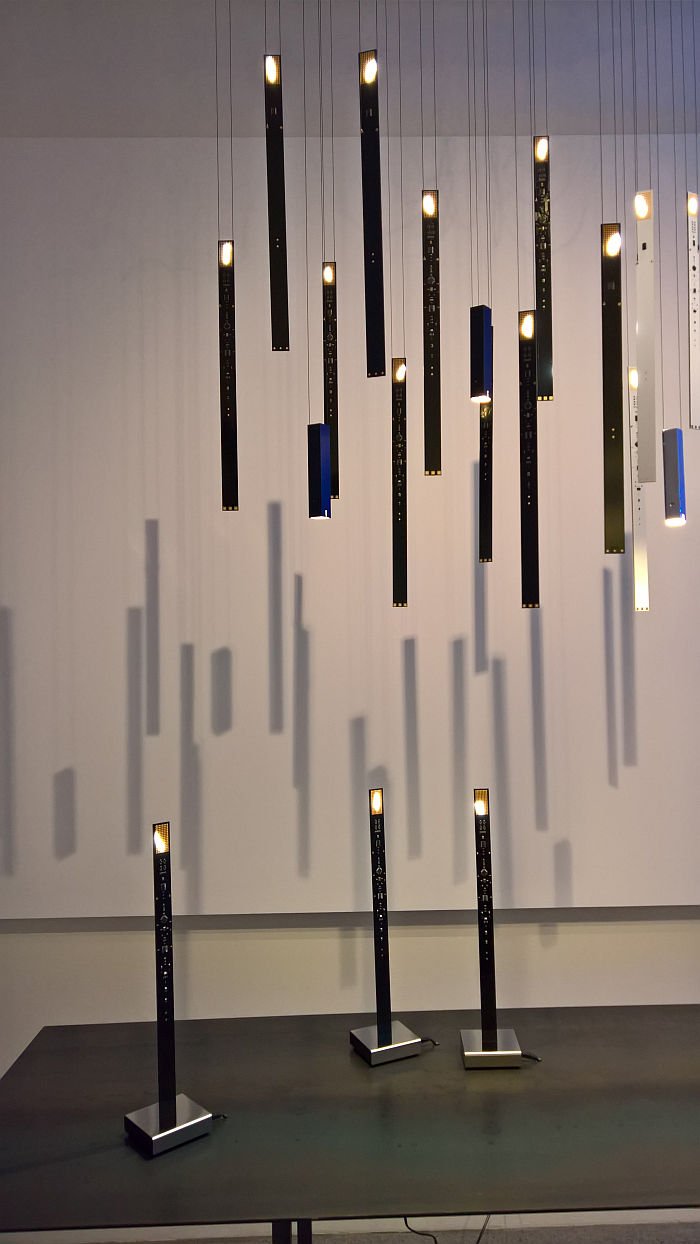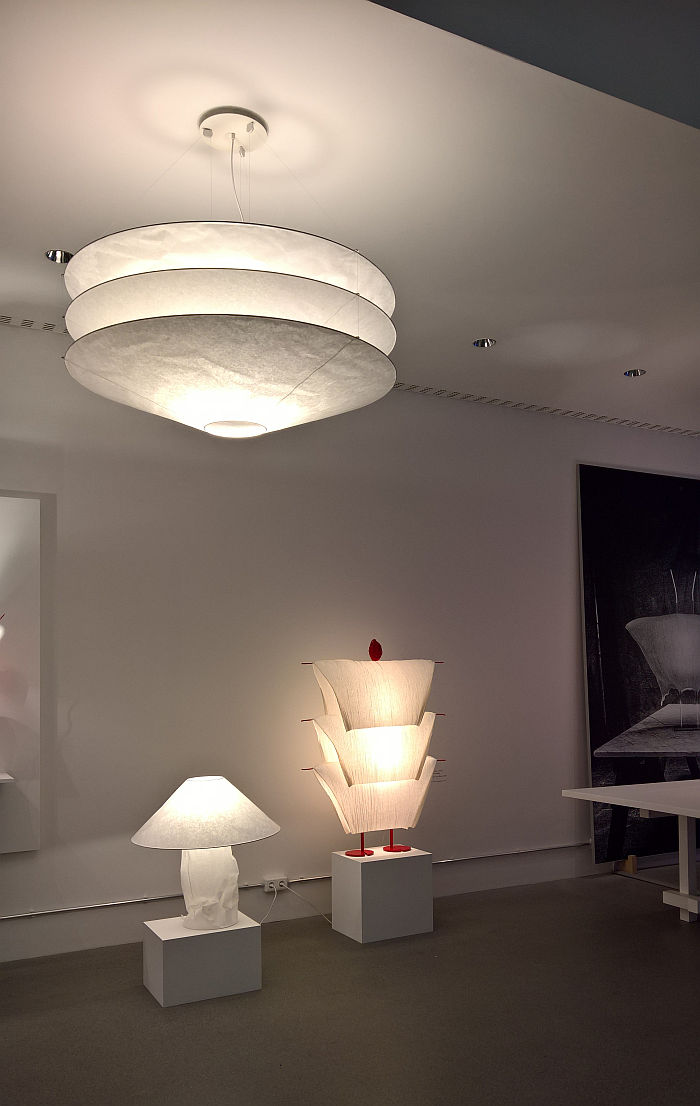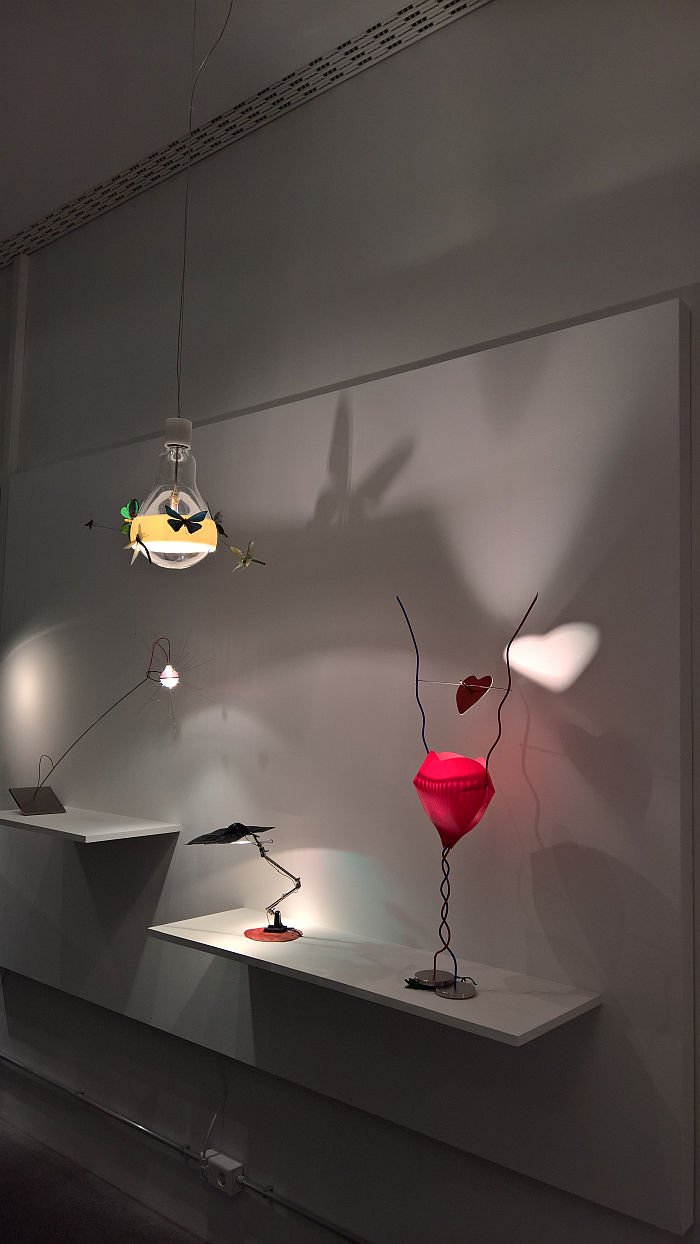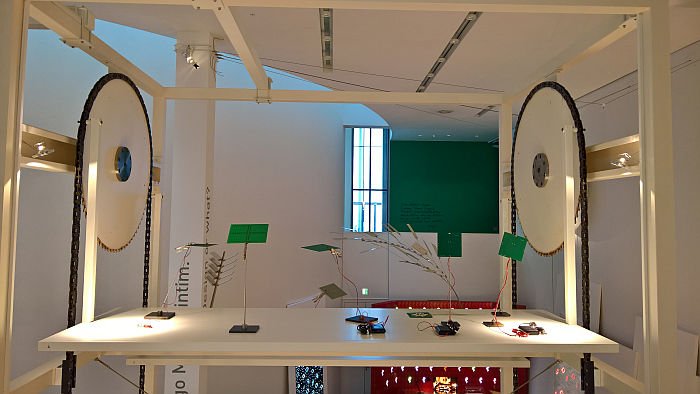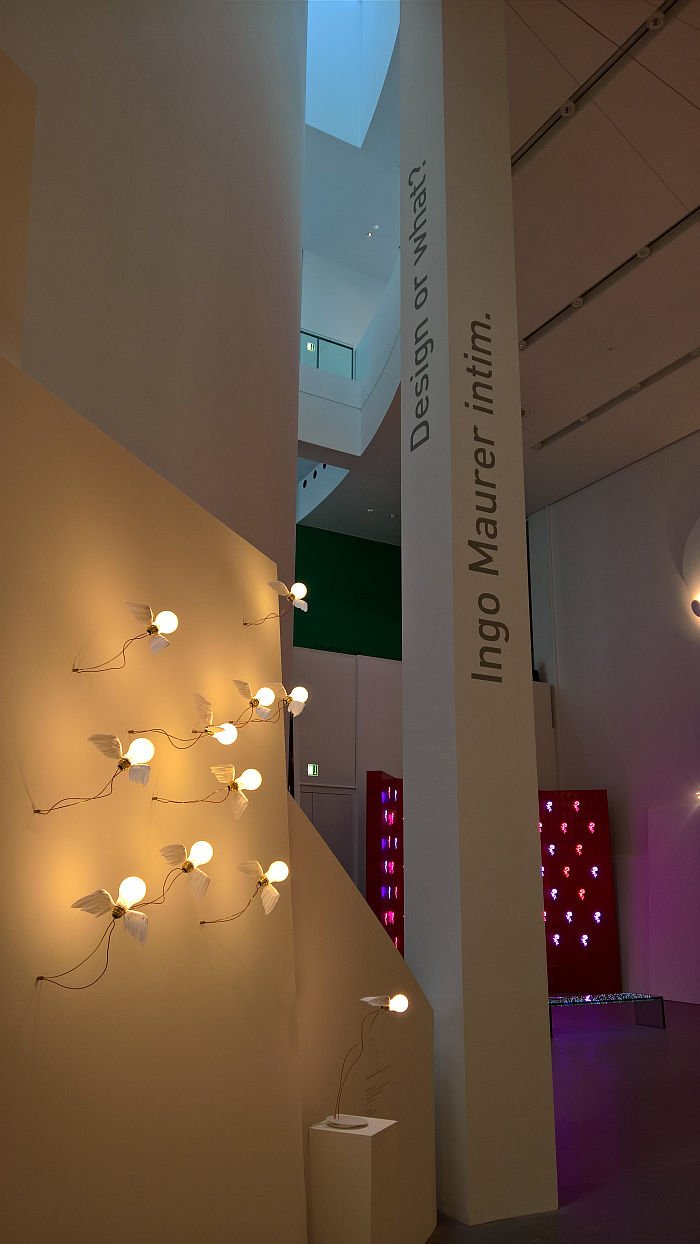In context of the 2013 exhibition Lightopia at the Vitra Design Museum a point of particularly intense illumination, pun intended, was the difference between light and lighting, and that the craft of the lighting designer is to bring a tangible form to an intangible material.
With the exhibition Ingo Maurer intim. Design or what? Die Neue Sammlung – The Design Museum Munich celebrate, and remember, one of Germany's leading designer's of light.....
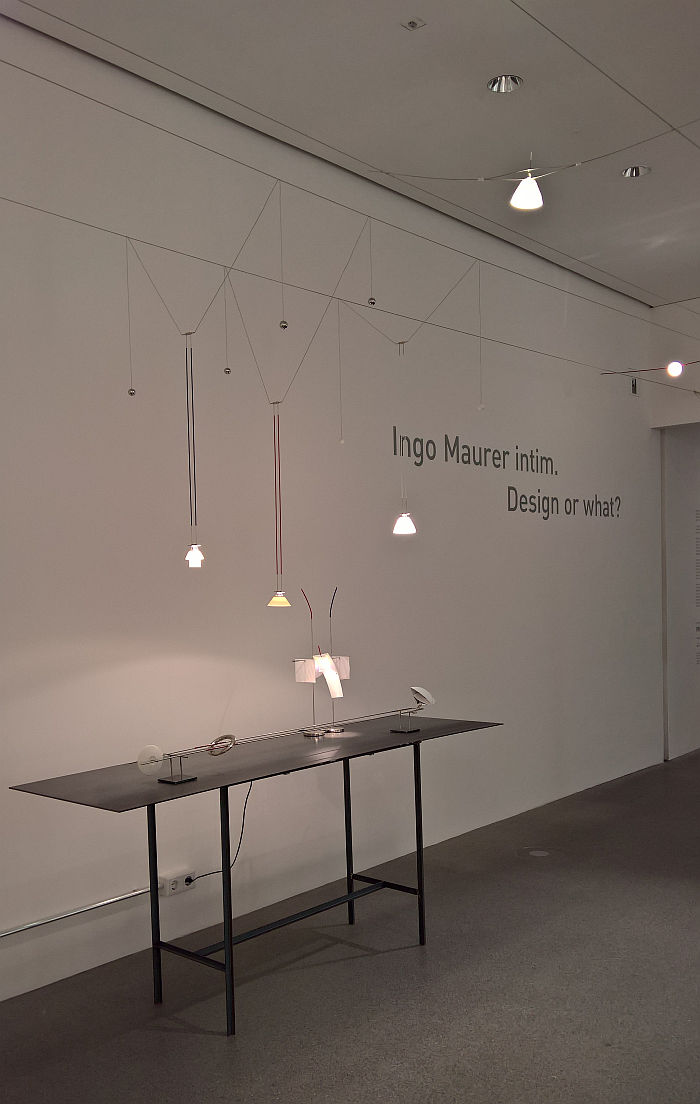
Born on May 12th 1932 on the Lake Constance island of Reichenau, Ingo Maurer initially trained as a typographer in Germany and Switzerland, subsequently studying Graphic Design, and taking his first professional steps, in Munich, before moving to the USA in 1960 where he spent periods working in New York and San Francisco. Returning to Munich in 1963 Ingo Maurer established himself in 1966 as studio Design M, and swapped Graphic Design for Lighting Design; if you so will swapped the 2D illumination of graphics for the 4D, 2D?, illumination of lighting.
And achieved an international success with his first project: Bulb. An oversized light bulb, specifically a 30 cm high by 20 cm wide light bulb, with an actual light bulb where the filament of the oversize bulb should be, a work which the MoMA New York added to its permanent collection in 1968 and a work which with its readymade poppy overtones sent and sends a very knowing, late 1960s, wink in the direction of a Gyula Pap or a Wilhelm Wagenfeld.
In 1973 Design M became simply Ingo Maurer and the intervening decades have seen Ingo Maurer designer and Ingo Maurer company develop not only a myriad lamps and lighting systems including works such as the winged Lucellino family, the YaYaHo low-voltage halogen system with its reduction to cables and exposed halogen bulbs, or the Zettel'z collection with their profusion of slips of note paper in place of a shade, but also public lighting design projects and light installations including, and amongst many others, Earthbound - Unbound at Toronto International Airport, The Tree for Bodegas Vega Sicilia near Valladolid, Spain, the Silver Cloud for the Residenztheater in Munich or the light and colour concepts for Munich's Marienplatz, Münchner Freiheit & Westfriedhof underground stations.
In context of Die Neue Sammlung's Paternoster Hall exhibition series, a series of exhibitions in which international creatives are commissioned to realise a showcase which remains on show in the Pinakothek der Moderne's Paternoster Hall for eleven months, and a series whose alumni include the likes of Friedrich von Borries, Konstantin Grcic or Hella Jongerius & Louise Schouwenberg, Ingo Maurer was asked if he would be interested in contributing an exhibition based around his work and reflective of his design understanding and position, he was, the result is Ingo Maurer intim. Design or what?
Ingo Maurer sadly passed away on October 21st 2019 in Munich, aged 87, and less than a month before the opening of his exhibition; and thus much as Mondo Mendini at the Groninger Museum exists as a very personal celebration and retrospective of the late Alessandro Mendini, Ingo Maurer intim. Design or What? stands as a very personal celebration of both Ingo Maurer the man and a very personal retrospective and study of Ingo Maurer designer.
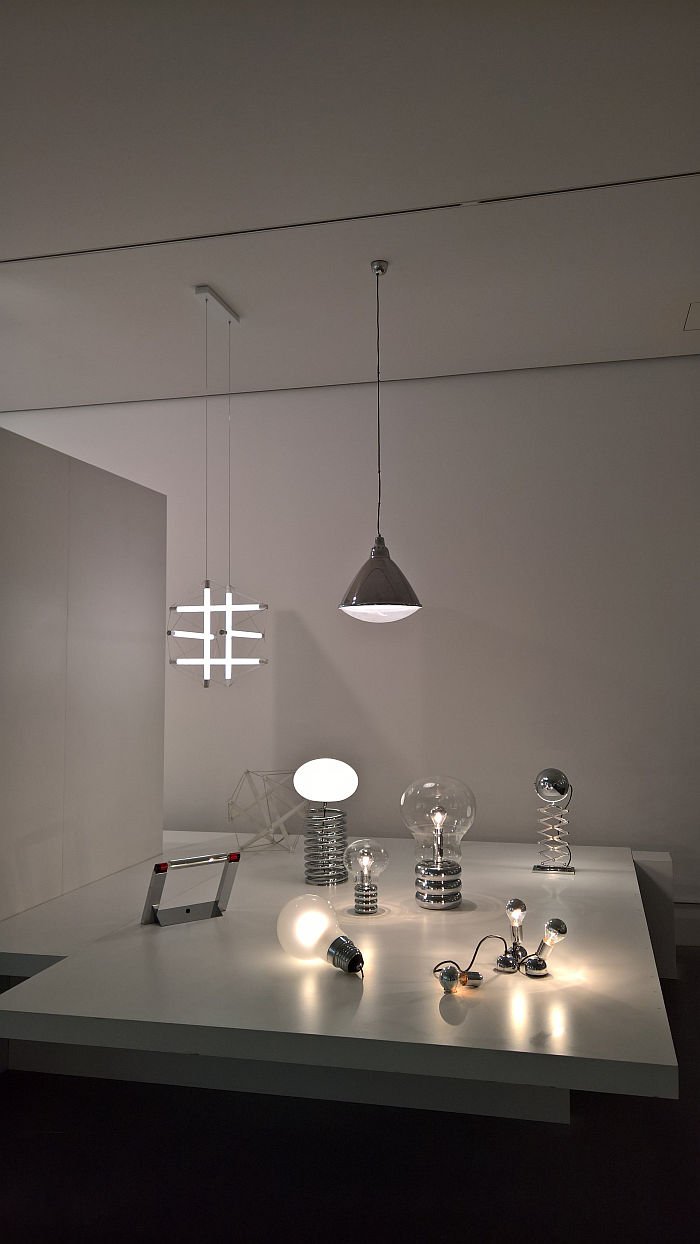
Covering Ingo Maurer's 50+ year career, from his breakthrough Bulb from 1966 to 2019's La Festa delle Farfalle or Ooop's, Design or what? not only neatly demonstrates how fluidly Ingo Maurer moved between and fused, apparently, strictly defined terms such as architecture, design or art, but for all illuminates, no pun intended, the myriad differing understandings of light, differing essences of light, and how Ingo Maurer's canon embodies those understandings and essences.
Or put another way......
Light as play. Over generations painters, novelists, architects, composers and poets have venerated and exploited the play of light, both graphically and figuratively; and a playfulness in light which Ingo Maurer employed throughout his career, be that through wordplays and bon mots in the objects names, as exemplified by, and amongst many, many others, the aforementioned Zettel'z, a play on the German Zettel, a slip of note paper; Oh Man, It's a Ray!, a readymade-esque work which recalls one of the Surrealist pioneers of the genre; or Silly-Kon whose bright red shade is crafted from brass silicon. Or through the absurd and quirkily whimsical forms and contexts in which Ingo Maurer places light, as exemplified by works such as Remember Yves, a tribute to the French artist Yves Klein arguably best known for the colour blue and his work Leap into the Void: and which depicts a blue man leaping into a void; Flatterby which comes with its own flock of moths and butterflies hovering around the lightbulb, thus less mimicking nature as outright replacing it; or Porca miseria!, a still life of exploding porcelain tableware and which, we learn, was originally named Zabriskie Point after the 1970 film from whom the idea of the time frozen explosion was borrowed/inspired/informed, but which was renamed in the wake of its premiere at Euroluce Milan 1994, where an Italian visitor (reportedly) expressed his delight at the work with the words "Porca miseria! Che fantastico, Ingo" Damn it, Ingo! It's fantastic. And Porca miseria! would also be the cry of anyone breaking that much porcelain. Just less positively implied.
Light as shadow. Just as a fundamental aspect of contemporary black and white photography is the studied interplay between the black and the white as much as it is the composition, so to a fundamental aspect of lighting design is the studied interplay between light and shadow, the use of shadow as a functional adjunct. And something that can be appreciated and understood directly in works such as Eclipse Ellipse or the aforementioned La Festa delle Farfalle, but also less directly through a careful study of Maurer's designs, a careful study beyond the physical composition.
Light as technology. Among the numerous components of lighting design a central one is exploiting, and giving a form, a cultural expression, to new technology and materials, something that, arguably, began with primitive developments of primitive torches and became increasingly relevant with the development of the electric light bulb in the late 19th century and the rapid increase in domestic electric lighting in the early 20th century: new solutions were needed, something elegantly underscored by the elementary research undertaken by Poul Henningsen in the 1920s on the way to his PH lamps, lamps that are as much about understanding electric light as they are a platform for electric light. And something that since the 1920s has continued at ever greater speed as technology develops at ever greater speed. And developments to which Ingo Maurer greatly contributed including, and amongst other examples, with YaYaHo as the first low-voltage halogen bulbs on wire system; through his explorations and evolutions of LED and OLED technology, including developing with 2001's EL.E.DEE the first commercial LED table lamp; or his contribution to the development of touch sensitive light controls, something which, as we noted from Inspired by Bauhaus – Gotha Experiences Modernity at the KunstForum Gotha can be considered a conceptual further development of Ruppelwerk Gotha's Tastlichte lamps, lamps where the whole base is one large switch, and works in whose development Marianne Brandt, in all probability, played a role. And thus a, one presumes, similar interplay of engineer and designer.
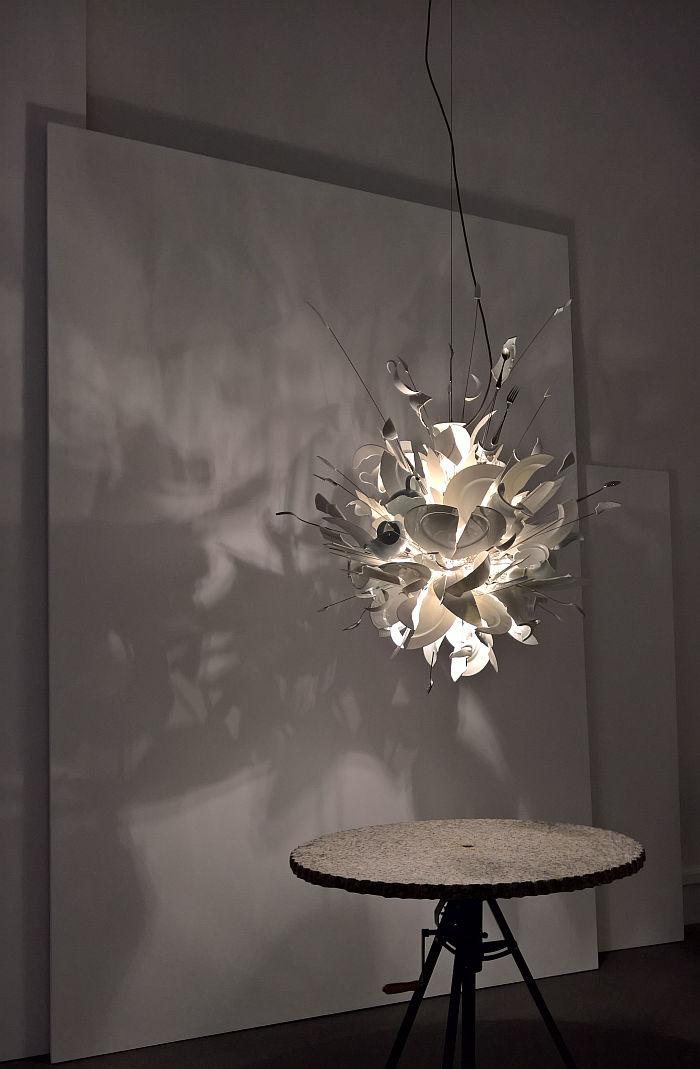
Light as emotion. Little awakens in us quite such strong emotional connections as light, something eloquently described by an Isamu Noguchi when he talks of his childhood memories of viewing the world through the Shōji screens of Japan, but also found, for example, in our primitive attraction to flames or our avoidance of bright lights in those moments when we're feeling down and grey. And a functional aspect of light perhaps best understood in Ingo Maurer's public lighting design projects and installations, but far from absent in the individual lamps.
Light as progression. Much as light is an ever further, deeper, onward travelling wave-particle duality, a, to quote Einstein, "finite number of energy quanta that are localized in points in space", so, as the curator's note, Ingo Maurer never considered a project finished, rather always considered any given project as a snapshot of a moment, if one so will, a quantum frozen in a point in space, and something intended to be continued, to be found later, further anon and somewhere anew. Light never stops, why should lighting.
Light as a collective resource. Whereas one can stand alone in the spotlight, as ABBA teach us, there is no lonelier place, much better to gather with others in a shared, communal, universal radiance. So Ingo Maurer company, where not only those works created as team are (rightly) accredited to "Ingo Maurer + Team", but also Ingo Maurer's many cooperations be that with engineers and technicians such as, and amongst many others, Hermann Kovacs on touch sensitive system, Eckhard Knuth on the hologram lights Wo bist du Edison...? and Holonzki or the chemicals concern Merck and lighting brand OSRAM on the development of OLED technology. Or with designers, including with Dagmar Mombach on the paper MaMo Nouchies collection with their very obvious nods to Isamu Noguchi or with Moritz Waldemeyer on My New Flame, objects which through a brutal separation of the romantic associations of a candle from the sober, functional reality of a candle, through so fulsomely abstracting fire's flame underscores our primitive, innate, irrational, attraction to flames. And cooperations which, and along with objects created without direct input from Ingo Maurer, such as Campari Light by Raffaele Celentano, Canned Light by Christoph Matthias & Hagen Sczech or Stefan Geisbauer's Looksoflat, which lookso and iso, underscore that although Ingo Maurer company is not a synonym for Ingo Maurer designer, in many regards it is, that that which Ingo Maurer company produces could be from Ingo Maurer designer, even when it isn't. And also underscores that despite the unequivocal title Ingo Maurer intim isn't just about Ingo Maurer, but Ingo Maurer's understanding of light, lighting and lighting design.
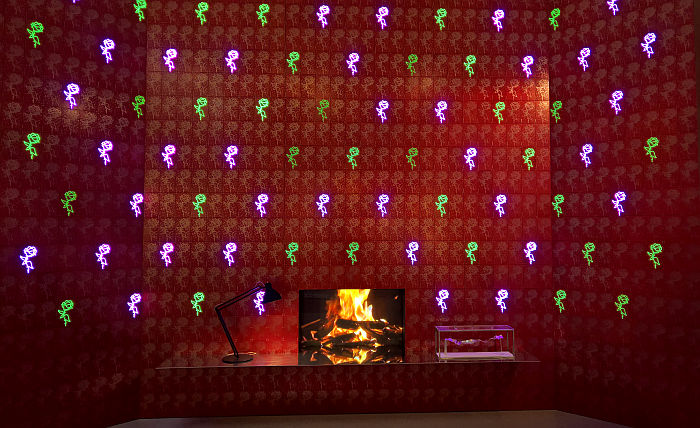
Presenting objects by both Ingo Maurer designer and from other designers for Ingo Maurer company in the Paternoster Hall while the two eponymous Paternoster house both prototypes and models, for all of LED and OLED projects and which help elucidate, no pun intended, the development and evolution of Maurer's projects, and also models and mock ups of public lighting projects both realised and planned, the exhibition design concept allows for an approachable, accessible and well rounded introduction to the work and design understanding of Ingo Maurer: if works and understandings which, and as with those of Alessandro Mendini, or indeed Albert Einstein, can, at times, be difficult to approach, can be less accessible than the exhibition design.
And that we'd argue, largely on account of the, for want of a better phrase, Surrealist informed character of many of the works; not a purist Surrealist-Surrealist character, on the one hand there is an awful lot of conscious thought in the works and on the other there is also an unmistakable predilection for related expressions be that Pop Art, Conceptual Art or a general anti-functionalism. But we like the description Surrealist for all in terms of the fanciful compositions such as 1982's part-chicken, part-nightmare Bibibibi, the various Luzy models with lightbulbs dangling from the fingers of rubber gloves or the flock of Lucellino's murmarating as Birds Birds Birds, or in terms of the essentially Reaymade/Bricolage nature of others, for all the stripped down electronics aesthetic of works such as the aforementioned My New Flame and EL.E.DEE, and a Surrealist informed character which can irritate our conventional understandings of lighting objects, objects which are, more often than not, and generalising much more than is heathly, designed to be aesthetically accessible and functionally passive beyond making light available. Ingo Maurer's are, more often than not, anything but.
With its spacious, unhurried exhibition design and concentrated presentation of some 80 projects in a relatively small space Ingo Maurer intim. Design or what? is very much an invitation to become better acquainted with the work of both Ingo Maurer designer and Ingo Maurer company, to get closer to it, to, if one so will, become intimate with Ingo Maurer. The presentation format allowing as it does one to not only better understand the work in context of light, in context of lighting, of the transforming of an intangible matter into a physical object, in context of what we'd describe as Ingo Maurer's almost obsessive fixation on the light bulb, that form that started his career as a Lighting Designer and, regardless of wherever else he wandered, he continually returned to throughout his career. But also to better understand the work of Ingo Maurer Lighting Designer in context of Ingo Maurer Graphic Designer.
As previously noted, when Ray Eames was asked how it had felt to give up her art for design she answered that she hadn’t given up art, she had changed her palette: Viewing Ingo Maurer intim. Design or what? one senses something similar, senses that in 1966 Ingo Maurer merely changed palette: Ingo Maurer's designs, and generalising to the point of untruth, are fundamentally, inherently, graphic, but given a new dimension, or two, and thus allowed an extra dimension, or two, of emotion, play, expression, engagement and for all functionality. Are not merely passive objects created as platforms for the functionality of light, but proactive objects, objects which exist almost independent of light, if very much in harmony and affinity with light, and thus objects which augment the functionality of light beyond illumination, make light much more than that which an Albert Einstein could ever describe, bring it much more in to context of the (possibly attributed) quote from Ettore Sottsass that "When I was young, all we ever heard about was functionalism, functionalism, functionalism. It’s not enough. Design should also be sensual and exciting" And to which Ingo Maurer added shouldn't take itself too seriously, should always anticipate evolving technologies and should occasionally terrify.
And thus as an exhibition Ingo Maurer intim. Design or what? not only allows one to approach a better understanding of Ingo Maurer's work, Ingo Maurer's approach to his work and understanding of design, and by extrapolation the craft of the lighting designer, but also intensely illuminates, pun very much intended, Ingo Maurer, and in doing so tends to confirm The Smiths claim that, There is a light that never goes out.......
Ingo Maurer intim. Design or what? runs at Die Neue Sammlung – The Design Museum, Pinakothek der Moderne, Barer Straße 40, 80333 Munich until Sunday October 18th 2020
Full details, including information on the accompanying fringe programme, can be found at https://dnstdm.de/en/ingo-maurer/
